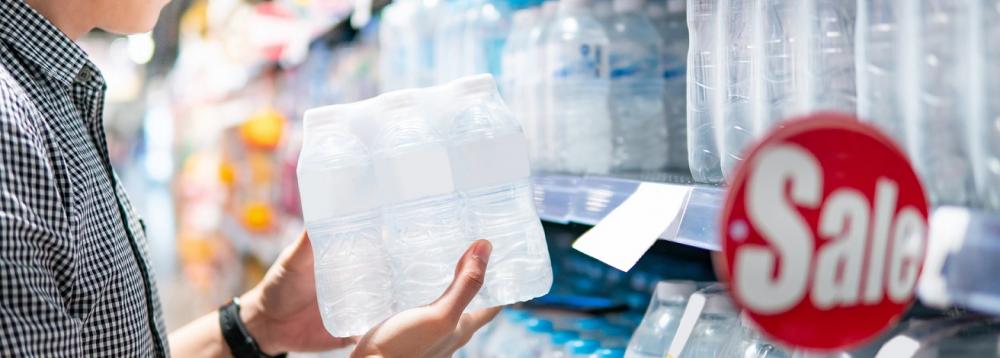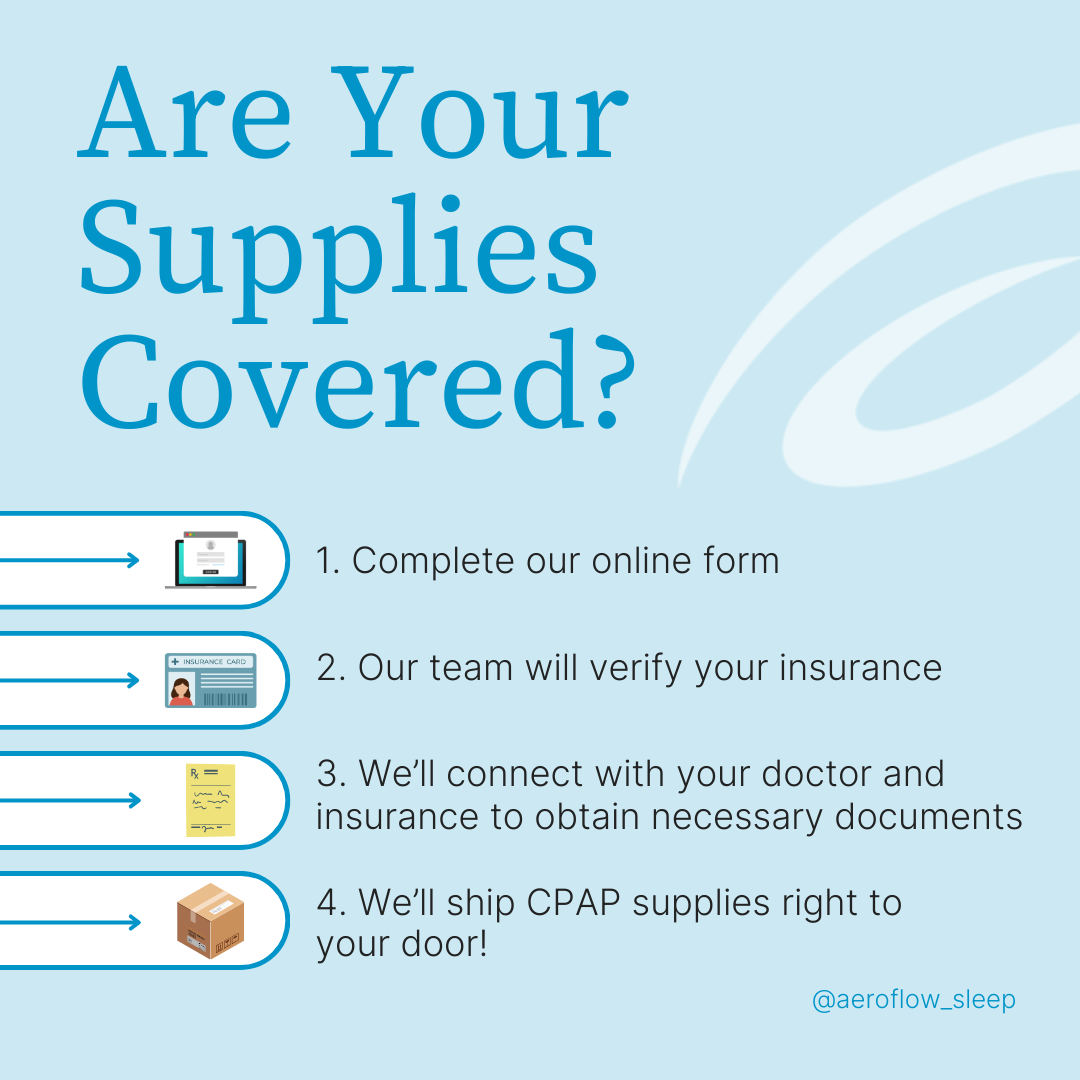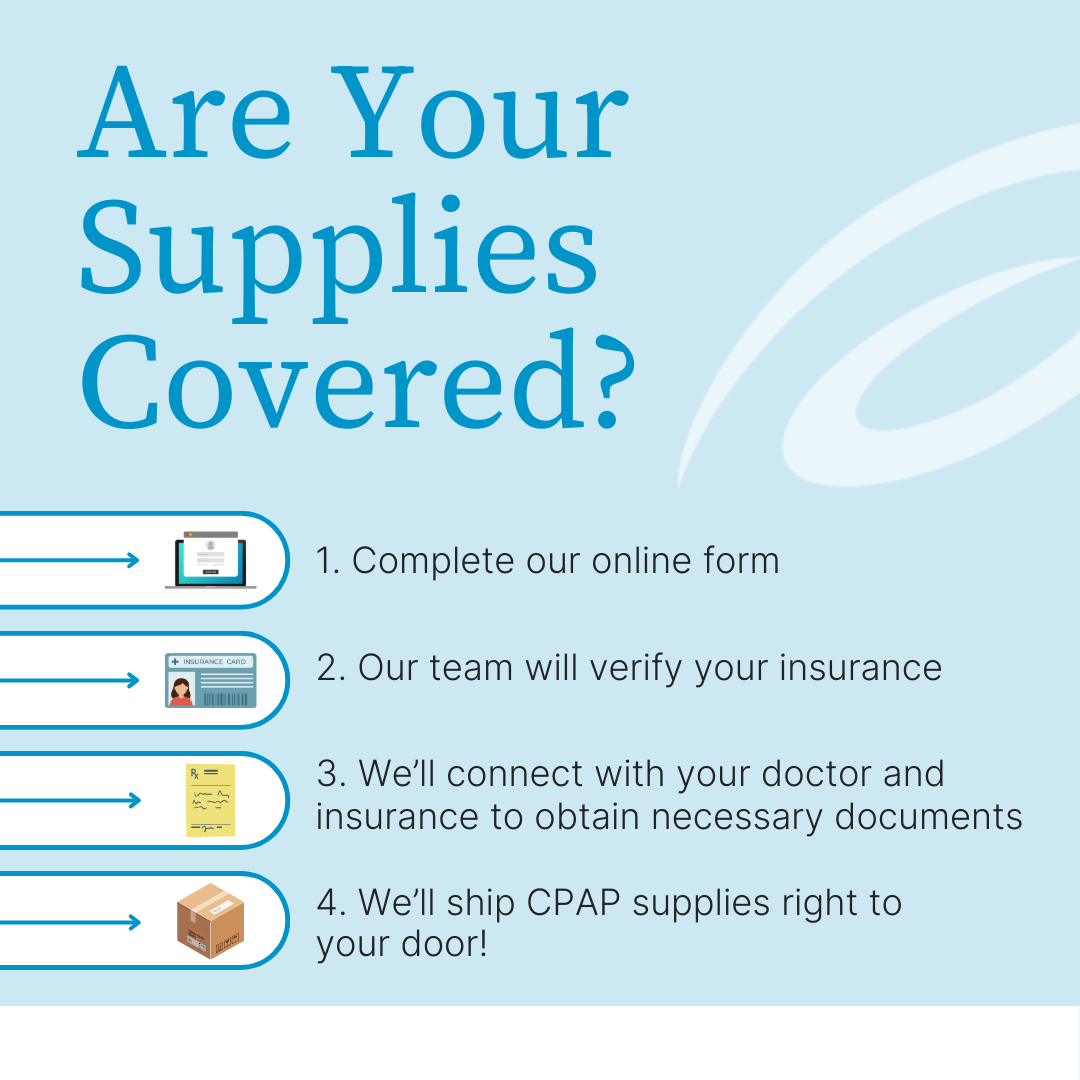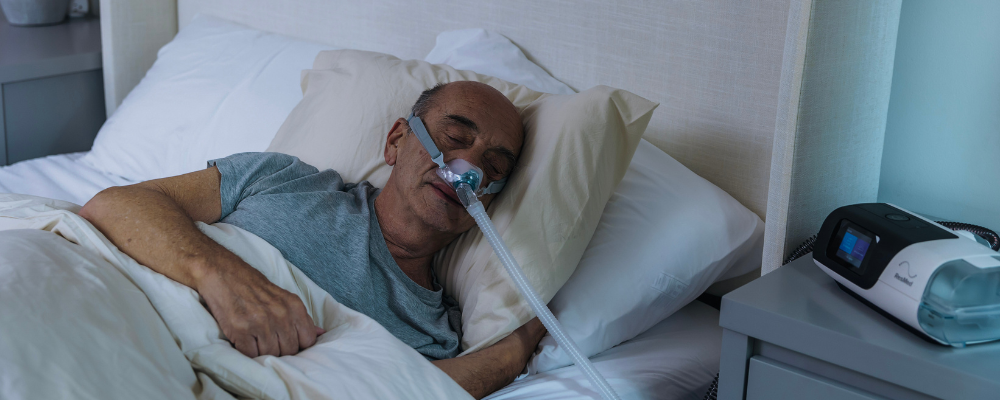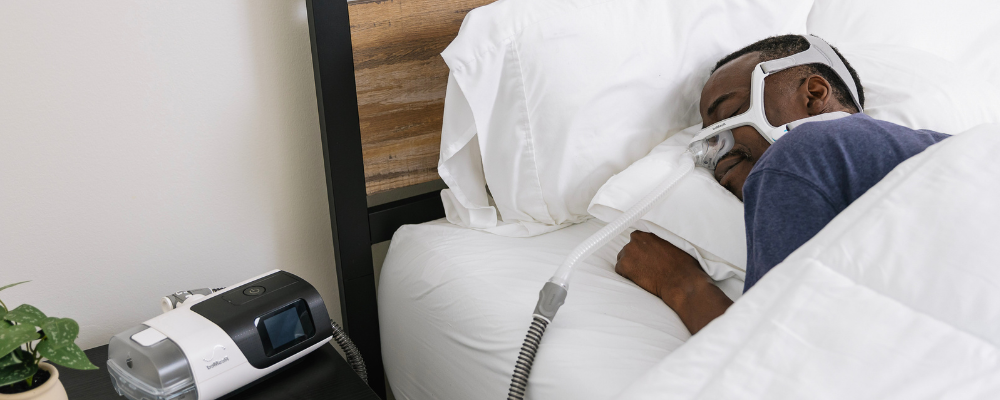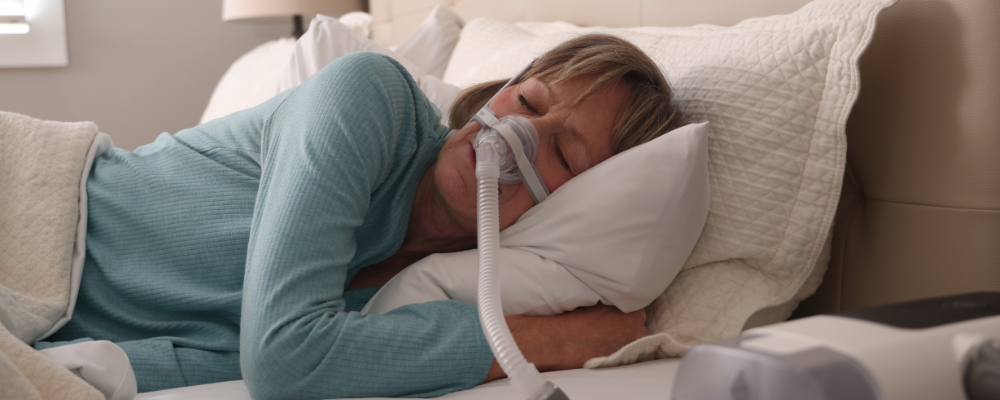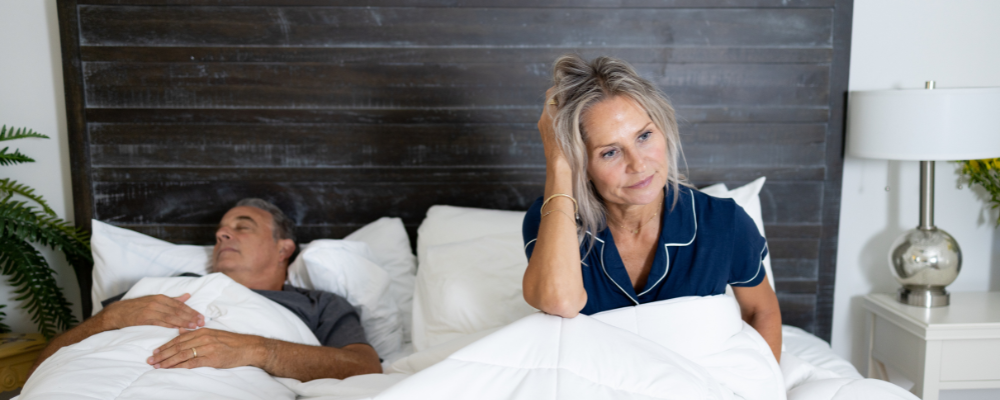A CPAP humidifier (or CPAP water chamber) can be the key to successfully treating your sleep apnea. It can make your airflow more comfortable and eliminate symptoms; like dry mouth and sore throat. Except always having to keep distilled water around is a bit of a pain. Is bottled water just as good? What would happen if you used tap water anyway? Is your doctor just in the pocket of “Big Water?” The answer can have a big impact on your health and your wallet. Read on to learn 4 easy CPAP humidifier tips, especially how the right kind of water can save you!
What Does The Water Chamber On A CPAP Machine Do?
Think about how humidification works. There are lots of different types of CPAP humidifiers just like there are lots of different CPAP manufacturers—from Philips Respironics old Dreamstations to React’s Luna G3. One is even trademarked; Humidair technology is found in every ResMed AirSense 10 CPAP, AirSense 11 CPAP, and AirCurve 10 BiPAP machines’ water chambers. They all effectively do the same thing though: they vaporize your water and send it into the air you breathe.
The thing is…you breathe anything that happens to be in the water, too. That includes any germs, bacteria, or trace chemicals and minerals, which is actually what led to the Philips Respironics machine recall in 2021.
4 Tips & Why Distilled Water For CPAP Matters
You want to keep your CPAP humidifier, water chamber, really all CPAP supplies in check, and Aeroflow Sleep knows how to do it.
1. What Kind Of Water Is Best For CPAP?
Let’s go ahead and start by addressing the elephant in the room… According to doctors, CPAP manufacturers, and insurance companies alike, distilled water is the best choice for your CPAP machine. The distillation process guarantees that the water is already free from microbes, chemical contaminants, and minerals that cause buildup.
For that exact reason, the same experts also agree that you should avoid using tap water in your CPAP water tank. In fact, the Centers of Disease Control (CDC) stated in 2023 how it’s a common misperception that tap water is sterile; tap water is not sterile, so you have the “use of unsterile water in home medical devices” that can prompt infection. This is especially true if you live in (or travel to) a place where the local water isn’t safe to drink. If you can’t drink it, you probably don’t want it in your lungs either.
But even if your water is safe to drink, it can be bad news for your CPAP equipment, because over time, your machine will break down and any mineral deposits in your device will reduce the lifespan of your machine. Insurance won’t cover a new one if this happens, nor will the manufacturer redeem the warranty.
2. How Do I Clean And Maintain My CPAP Water Chamber?
To clean your CPAP supplies, submerge your water chamber, tubing, and CPAP mask cushions in warm, soapy water at least once a week. Aeroflow Sleep recommends Dawn or Ivory dishwashing liquids, if you’re not sure what’s considered safe. Rinse and allow all parts to completely air dry before using again. You should also pour out any distilled water left in the water tub every morning—yes, every single day—and then refill it every night before bed, being careful not to overfill the chamber’s water capacity.
Watch a quick cleaning tutorial with our Director of Clinical Operations, Michelle Worley, RN...
But wait… If tap water can be used to clean my CPAP water chamber, isn’t tap water effectively cleanable? Simply put, is boiled water the same as distilled water? The answer is no; while boiling your water may kill any microbes, it won’t remove chemical or mineral contaminants.
The same goes for bottled spring water, filtered water, reverse osmosis (RO) water, and so on; do not use them! Distilled water remains best, because it has actually been physically separated from these contaminants.
3. Is My CPAP Water Chamber Dishwasher Safe?
No, there is not a dishwasher safe water chamber. Generally, the same water that runs through your sink enters your dishwasher, plus dish detergent—not to be confused with dish soap or dishwashing liquid—may introduce chemicals you shouldn’t breathe.
4. Can I Make My Own Distilled Water For CPAP?
Yes; although distilled water is readily available at most grocery stores and usually costs no more than $1.50 for a whole gallon jug, it’s also very easy to make your own! Here’s what you’ll need and how to do it…
Items:
- 1 Large Cooking Pot
- 1 Large Pot Lid
- 1 Smaller Cooking Pot
- Clean Water
- Ice
- Stove
Setup Instructions:
- Place the large cooking pot on the stove.
- Place the smaller pot inside the larger pot. Choose a pot that leaves plenty of space between the two pots for steam to rise.
- Place the large lid upside down on the large pot.
WARNING: Both the water and the items needed will become very hot. Handle with care and always use oven mitts. Allow the distilled water to cool to room temperature before adding it to your CPAP humidifier, even if it’s heated.
Cooking Instructions:
- Fill the large pot with your starting volume of water. (Leave the small pot empty.) Remember that you want to leave plenty of space between the pots for steam to rise.
- Set your stove between medium to medium-high heat. You’ll want the water to begin to steam, but not to reach a boil.
- When steam begins to rise, fill the inverted lid with ice cubes.
- Allow steam to condense and drip into the smaller pot. Be patient and resist the urge to “help” the water drip. Only water that condenses and drips into the smaller pot is distilled. Also, make sure not to let the water completely boil off or you can damage your cooking pots!
Notes:
- You’ll end up with less distilled water than your starting volume, so plan accordingly.
- Be sure that there’s plenty of space between the pots for steam to rise.
- Be patient. Distillation takes time, and cranking the temperature higher won’t make much of a difference in speed, but it will make your equipment hotter!
- Replace the ice after it melts to keep the distillation process moving.
- Remember that only the water that collects in the small pot is distilled.
Can I Use My CPAP Without The Water Chamber?
Theoretically, you can use your CPAP without water and even without the water chamber attached to your CPAP machine. Humidifiers are an optional comfort feature that are ideal if you live in a cold climate or need help relieving certain sleep apnea symptoms; like dry mouth, sore throat, or nasal congestion. Still, they may not be needed if the natural humidity level of your room is akin to the rainforest.
Just be sure to turn your humidification settings off! Some machines that have built-in heated humidifiers may require you to insert a side cover where your humidifier water chamber would otherwise be if you’re going to use the machine without it.
How Often Should I Replace My CPAP Water Chamber?
Replacement water chambers are made available to most CPAP users with insurance, every 6 months regardless of your machine model and type. Aeroflow Sleep will even help to ensure you get yours on schedule and up to 100% covered. However, insurance companies, Medicare, and Medicaid may limit this to standard water chambers only; heated replacement parts are not typically covered.
To be certain you’re receiving the best possible coverage and care in your CPAP humidifier and more, please take a few minutes to join the Aeroflow Sleep family. All you need to do is fill out our online qualification form below to see if your insurance plan is in-network with us. Give us a try! Our team of dedicated Sleep Specialists is standing by to help you.


